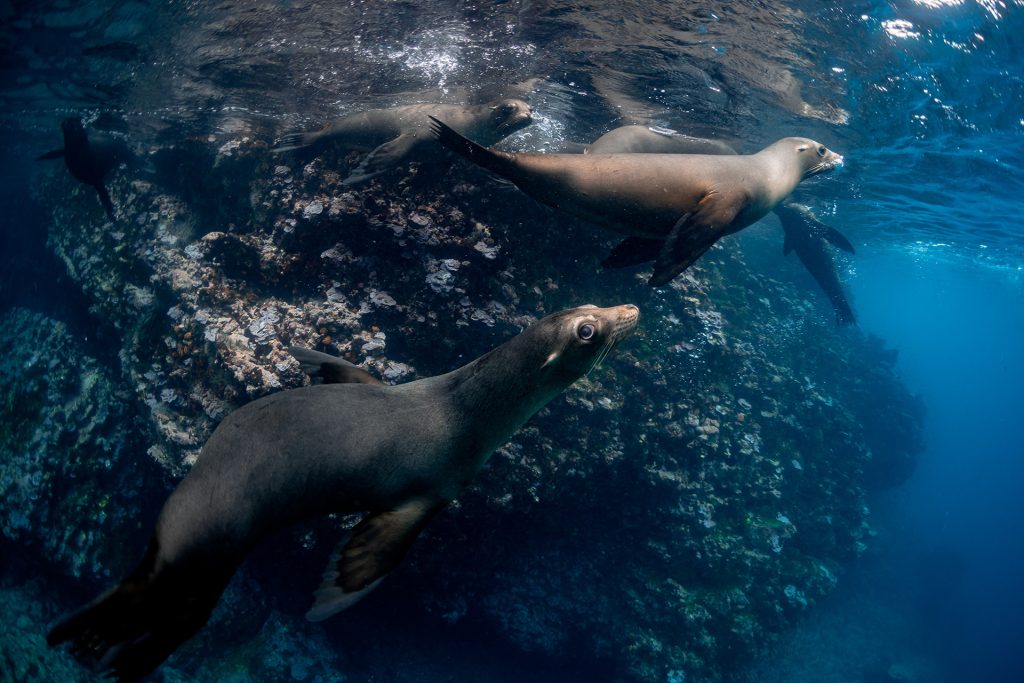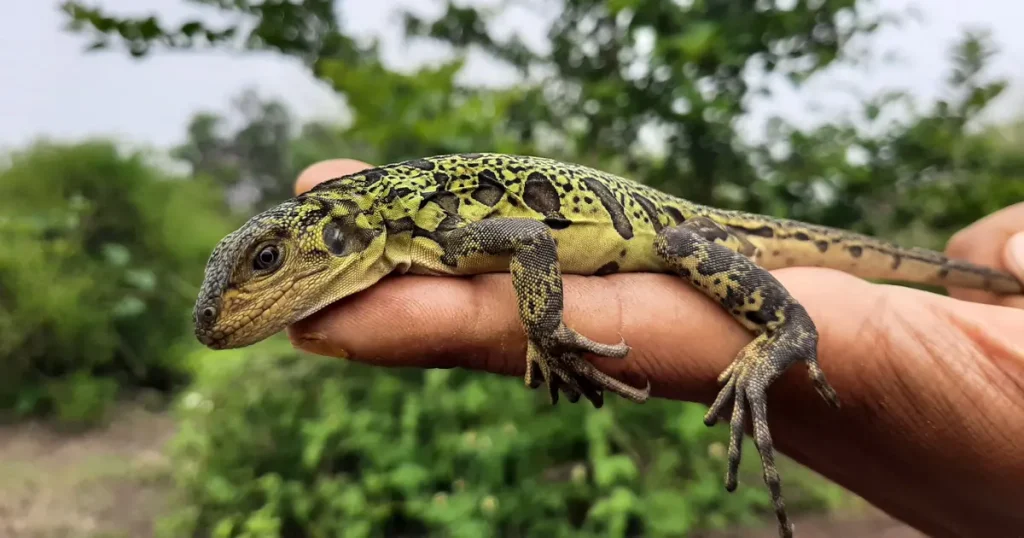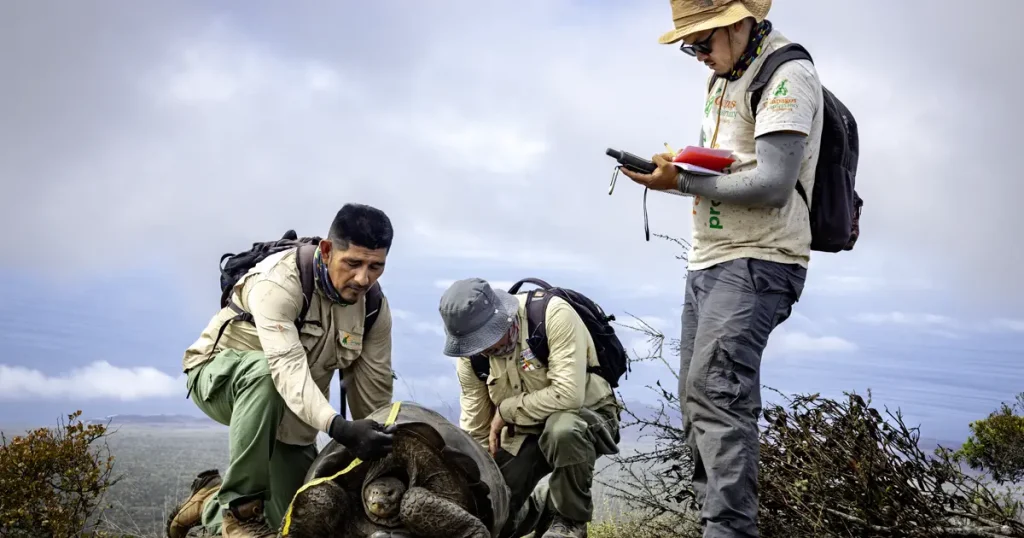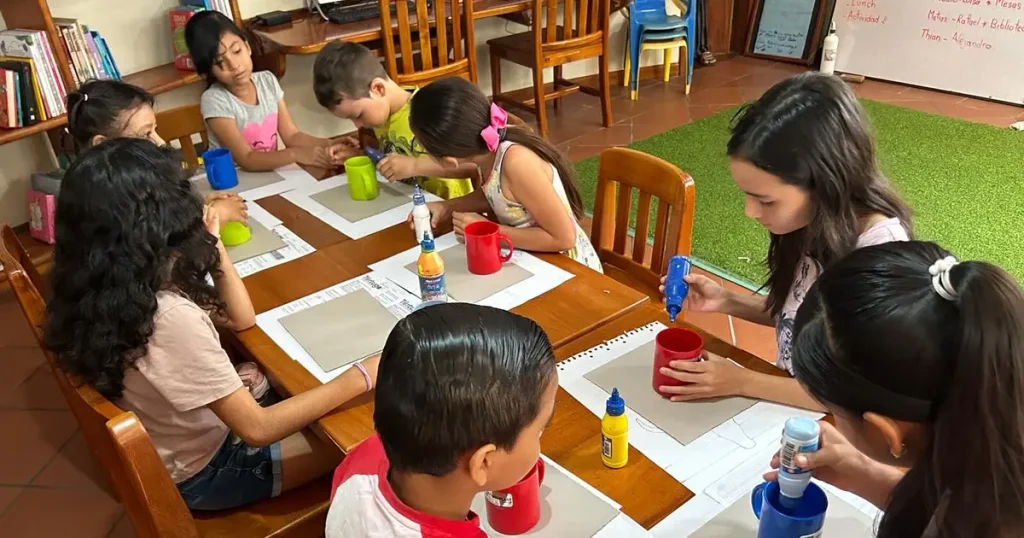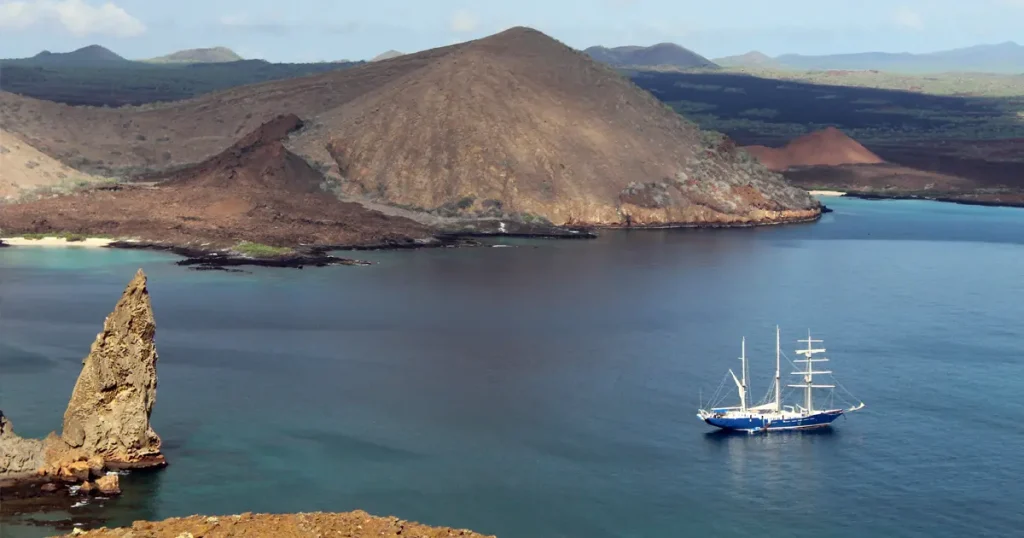Tracking the Impact of Climate Change on Galápagos Sea Lions and Fur Seals
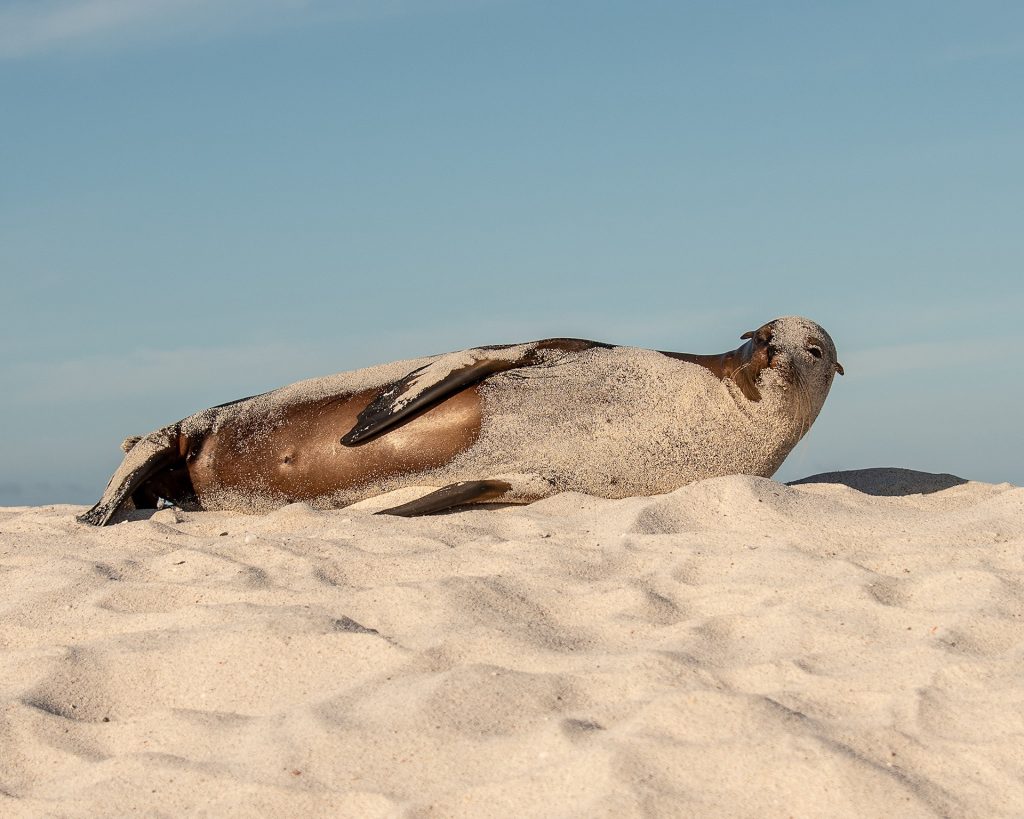
Thanks to unrestricted donor support, Galápagos Conservancy is supporting a new initiative to investigate how climate change will impact pinnipeds — endemic sea lions and fur seals — in the archipelago. The new study will monitor the feeding habits of these animals over time to see how they are being affected by changes in ocean temperature and prey availability.
Over the past four decades, Galápagos sea lions and Galápagos fur seals have faced significant population declines as a result of the changing climate, pollution, invasive species, and other human-driven impacts. As a result, today, these pinnipeds are listed under the International Union for Conservation of Nature (IUCN) Red List of Threatened Species.
Leading the research is Dr. Diego Páez-Rosas, a distinguished Galápagos marine scientist at the Universidad San Francisco de Quito (USFQ), who is supported by other USFQ researchers, the Galápagos National Park Directorate, and Galápagos Conservancy. Páez-Rosas has spent the last two decades working on research projects related to the marine megafauna of the archipelago and calls Galápagos pinnipeds “sea health sentinels.” By studying their behavior and population trends, we can understand what is happening in the trophic levels below them (i.e., in populations of fish, plankton, and other organisms further down the food chain) and gain insights into the overall health of the marine ecosystem.
Many experts currently indicate that one of the effects of climate change is a tendency toward more frequent and intense El Niño events that increase ocean temperature. That temperature increase in the Galápagos Marine Reserve leads to decreases in productivity and makes the pinnipeds’ food sources scarce, endangering their populations.
Dr. Paéz-Rosas affirms that by “investigating these issues, we are tracing the foraging strategies of Galápagos marine predators and trying to link population dynamics, home range, trophic flexibility, and health with their feeding success and energy budgets.” Dr. Paéz-Rosas’ work is starting to reveal that Galápagos pinnipeds, in fact, consume a wide variety of fish, including some sharks and other species previously unknown to be in their diet. They have an extensive diet, which bodes well for them adapting to future changes in marine life communities brought on by climate change.
Dr. Jorge Carrión, Galápagos Conservancy’s Director of Conservation, said that this research will produce baseline data for the conservation of Galápagos pinnipeds and enable researchers to look into the potential long-term effects of climate change on these species.
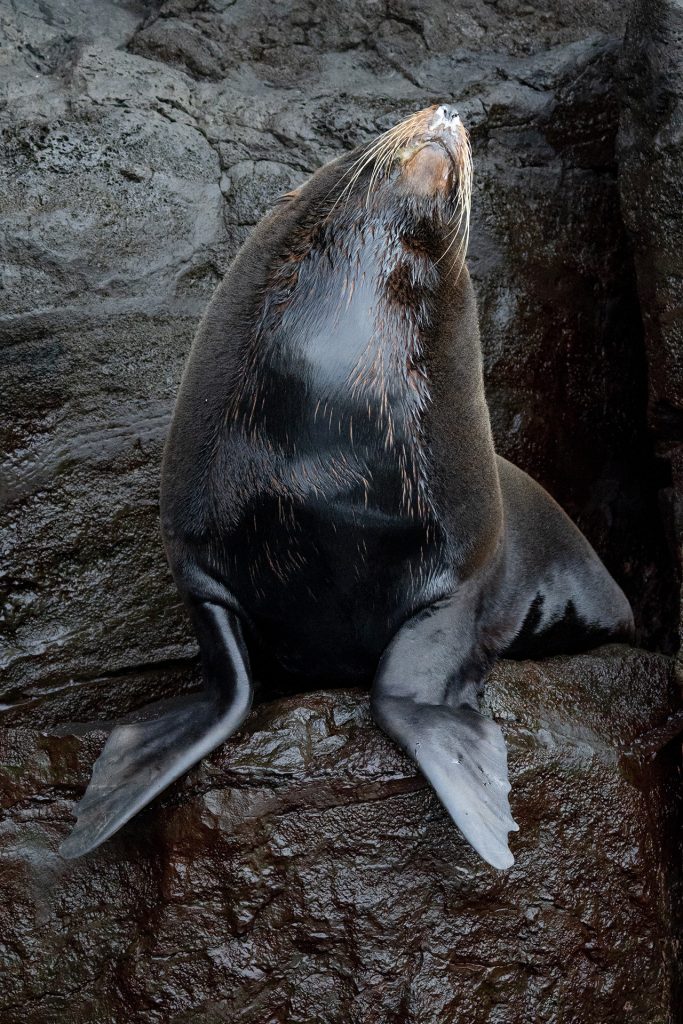
Galápagos Conservancy congratulates Dr. Diego Páez-Rosas for his contribution to the conservation of Galápagos ecosystems. His research into the relationship between climate change and Galápagos pinnipeds will undoubtedly aid in the conservation of these species.
